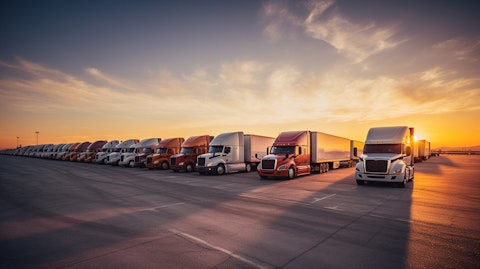Autonomous trucks have the potential to significantly change the transportation industry by improving efficiency and safety on the roads. They use advanced sensors and artificial intelligence to navigate without human input, which could reduce driver fatigue and human error.
The most important impact is that autonomous trucks can lower costs and increase delivery speed by operating continuously without breaks. This technology may also address driver shortages by shifting some responsibilities from humans to machines.
The transition to autonomous trucking presents challenges, including regulatory hurdles and public acceptance. However, its adoption could reshape logistics networks and supply chains in the near future.

The Impact of Autonomous Trucks on Transportation
Autonomous trucks are reshaping transportation by improving efficiency, safety, and operational costs. Significant changes are expected in technology deployment, cost structures, and insurance approaches.
Current State of Autonomous Truck Technology
Autonomous trucks rely on sensors, cameras, LIDAR, and AI algorithms to navigate roads with minimal human input. Currently, many companies operate Level 3 automation, where trucks control driving under certain conditions but still require human intervention.
Pilot programs run on highways and controlled routes demonstrate effective platooning and adaptive cruise control. However, full Level 4 or 5 automation, which allows complete self-driving without human backup, remains under development and regulatory review.
Software updates and sensor improvements are frequent, aiming to reduce errors and extend operational areas. Integration with logistics platforms enables better route planning, reducing empty miles and increasing utilization of these vehicles.
Efficiency and Cost Reductions
Autonomous trucks enable continuous operation, potentially running 24/7 with minimal breaks for maintenance or charging. This shift increases freight capacity and reduces delivery times on major routes.
Fuel savings emerge from optimized driving patterns, such as smooth acceleration and platooning, which cuts aerodynamic drag. Maintenance costs may also decrease due to predictable, controlled driving behaviors.
Labor costs represent another significant saving. Autonomous trucks could reduce dependence on human drivers, impacting wages and hiring expenses. This transition affects trucking insurance, as risk profiles change and new policies develop to cover autonomous systems alongside traditional liabilities.
Safety Enhancements in Trucking
Autonomous trucks aim to reduce accidents caused by human error, which accounts for over 90% of trucking crashes. Advanced driver-assist technologies improve reaction times and maintain safe distances more consistently than humans.
Sensors monitor blind spots and road conditions continuously, reducing risks of collisions and rollovers. Real-time data sharing between trucks and infrastructure can warn of hazards ahead, improving overall road safety.
Trucking insurance updates include the industry adapting by assessing system reliability rather than driver behavior alone. Insurers adjust premiums based on autonomous technology maturity, accident history, and cybersecurity risks linked to software vulnerabilities.
Challenges and Future Outlook for Autonomous Trucking
The development of autonomous trucking faces hurdles in regulatory frameworks and operational changes within the logistics sector. These issues require careful navigation to ensure safety, compliance, and effective integration.
Regulatory and Legal Considerations
Autonomous trucks must comply with varying state and federal regulations, which remain inconsistent across the U.S. This creates challenges in route planning and cross-border freight movement for self-driving vehicles.
Liability questions in accidents involving autonomous trucks are unresolved. Determining fault between manufacturers, operators, and software developers complicates legal proceedings.
Regulations must also address cybersecurity risks. Autonomous trucks rely heavily on software, making them vulnerable to hacking, which could disrupt supply chains or cause accidents.
States like California and Texas have pilot programs with specific rules on testing and deployment. However, a unified national framework is essential for widespread adoption.
Logistics Industry Adaptation
Logistics companies face significant shifts in workforce dynamics as autonomous trucks reduce the need for human drivers. This requires retraining programs and new job roles focused on truck monitoring and maintenance.
Operations will need to integrate autonomous vehicles into existing fleets. This includes adapting scheduling systems and warehouse procedures to accommodate varying delivery speeds and operational reliability.
The cost structure of freight transport could change with autonomous trucks’ lower labor expenses but potentially higher technology and maintenance costs. Companies must model these factors for accurate budgeting.
Some logistics firms have started pilot projects, using autonomous trucks on fixed routes to gather operational data. This phased approach helps identify practical challenges before full deployment.





